- Clone
- L291H4 (See other available formats)
- Regulatory Status
- RUO
- Other Names
- CKR4, K5-5, CMKBR4, ChemR13, CC-CKR-4, MGC88293, HGCN:14099
- Isotype
- Mouse IgG1, κ
- Ave. Rating
- Submit a Review
- Product Citations
- publications
CD194, also known as CCR4, is a CC chemokine receptor. It binds CCL17 and CCL22 and is expressed on a subset of T and B cells, basophils, monocytes, and NK cells. Human Th2 cells are characterized by the expression of CCR4 and CCR8, and these receptors are regulated differently during Th2 development. Human peripheral blood Tregs can be divided into two distinct populations based on the expression of CCR4. Freshly isolated Tregs express CCR4 and presumably represent memory-type Tregs, and CCR4- Tregs require CD3-mediated activation to acquire a regulatory activity. Depletion of CCR4+ T cells leads to Th1-type polarization of CD4+ T cells and augmentation of CD8+ T cell responses to tumor antigens. CCR4 and its ligands are important for the recruitment of memory T cells into the skin in various cutaneous immune diseases.
Product DetailsProduct Details
- Verified Reactivity
- Human
- Reported Reactivity
- Cynomolgus
- Antibody Type
- Monoclonal
- Host Species
- Mouse
- Immunogen
- Human CCR4 transfected cells
- Formulation
- Phosphate-buffered solution, pH 7.2, containing 0.09% sodium azide
- Preparation
- The antibody was purified by affinity chromatography and conjugated with Spark Red™ 718 under optimal conditions.
- Concentration
- 0.2 mg/mL
- Storage & Handling
- The antibody solution should be stored undiluted between 2°C and 8°C, and protected from prolonged exposure to light. Do not freeze.
- Application
-
FC
- Recommended Usage
-
Flexi-Fluors™ are provided at a standard 0.2 mg/mL concentration. We recommend titrating this reagent to determine the optimal concentration for each application. For many flow cytometry applications, conjugated antibodies perform well at concentrations ranging from 0.03 to 1.0 µg per million cells in 100 µL. We recommend testing a range of concentrations starting from 10 µg/mL.
For example, make five 1:1 serial dilutions of the 0.2 mg/mL antibody. Add 5 µL of each dilution (including the undiluted antibody) to 100 µL of cells (at 107 cells/mL) to test six concentrations -- 1.0, 0.5, 0.25, 0.125, 0.06, and 0.03 µg per million cells in 100 µL volume. Compare staining patterns or create a titration curve using the MFI or staining index to determine the optimal concentration. - Excitation Laser
-
Red Laser (633 nm)
- Additional Product Notes
-
For more information about Flexi-Fluors™, visit our Flexi-Fluor™ page and review FAQs associated with this product line.
Antigen Details
- Structure
- GPCR, seven transmembrane receptor
- Distribution
-
Expressed on a subset of T and B cells, basophils, monocytes, NK cells
- Function
- Migration of inflammatory and regulatory cells to the target tissues
- Ligand/Receptor
- CCL17 and CCL22
- Cell Type
- B cells, Basophils, Embryonic Stem Cells, Monocytes, NK cells, T cells, Tregs
- Biology Area
- Immunology, Innate Immunity, Stem Cells
- Molecular Family
- CD Molecules, Cytokine/Chemokine Receptors, GPCR
- Antigen References
-
1. Katschke KJ, et al. 2001 Arthritis Rheum. 44:1022.
2. Colantonio L, et al. 2002 Eur. J. Immunol. 32:1264.
3. Jakubzick C et al. 2004 Am. J. Pathol. 165:1211.
4. Morimoto Y, et al. 2005 J. Leukoc. Biol. 78:753.
5. Baatar J, et al. 2007 J. Immunol. 178:4891.
6. Kusumoto M, et al. 2007 J. Interferon. Cytokine Res. 27:901. - Gene ID
- 1233 View all products for this Gene ID
- UniProt
- View information about CD194 on UniProt.org
Related FAQs
- Does staining at room temperature or even at 37°C help for checking chemokine receptors expression?
-
Due to continuous recycling of many chemokine receptors, it may be worthwhile to consider staining at room temperature or at 37°C if the staining at lower temperature (which can potentially reduce receptor turnover) is not optimal.
- What are Flexi-Fluors?
-
Flexi-Fluors are rapidly made-to-order conjugated antibodies. The technology, manufacturing processes, and specifications used to create Flexi-Fluors are the same as our regular catalog products. However, the optimal concentration and performance of each Flexi-Fluor must be determined by the customer.
- How quickly will I receive my order?
-
We aim to ship Flexi-Fluors within 2-3 weeks of receipt of your order. However, depending on your location, shipping times may vary.
- How are Flexi-Fluors different from regular catalog products?
-
Flexi-Fluors are made on demand, specifically for you. Flexi-Fluors are manufactured using the same high-quality standards, and specifications as other catalog products. For faster delivery, Flexi-Fluors are not tested by flow cytometry to determine optimal concentrations or evaluate performance. This testing needs to be performed by the customer.
- How do I determine the optimal concentration for using my Flexi-Fluor? How should I titrate my antibody?
-
Flexi-Fluors are provided at a standard 0.2 mg/mL concentration. We recommend that you titrate your antibody to determine the optimal concentration to use for your application. For many flow cytometry applications, conjugated antibodies perform well at concentrations ranging from 0.03 to 1.0 µg per million cells in 100 µL volume. We recommend that you test a range of concentrations starting from 10 µg/mL.
For example, make five 1:1 serial dilutions of your 0.2 mg/mL antibody. Add 5 µL of each dilution (including the undiluted antibody) to 100 µL of cells (at 107 cells/ml) to test six concentrations - 1.0, 0.5, 0.25, 0.125, 0.06, and 0.03 µg per million cells in 100 µL volume. Compare staining patterns or create a titration curve using the MFI or staining index to determine the optimal concentration.
- I can’t find the antibody-dye combination that I need. When will it be available?
-
We continuously update our catalog, introducing scores of new products every month. Please get in touch with our Technical Service team for an update on new products or recommendations for suitable alternatives to complete your panel. Or contact Custom Solutions to inquire about our affordable custom conjugation services.
- I need help to validate the performance of my Flexi-Fluor. Who should I contact?
-
Please get in touch with Technical Service for assistance.
- Can I order more than 50 μg of a Flexi-Fluor?
-
Yes, you can order multiple vials of the same Flexi-Fluor products. We cannot guarantee, however, that these vials will be bottled from the same lot. For bulk single-lot orders, contact our Custom Solutions team.
- What is the expiration date of my Flexi-Fluor?
-
Expiration dates can be found on the vial label or by using our CoA lookup tool.
Other Formats
View All CD194 Reagents Request Custom ConjugationCompare Data Across All Formats
This data display is provided for general comparisons between formats.
Your actual data may vary due to variations in samples, target cells, instruments and their settings, staining conditions, and other factors.
If you need assistance with selecting the best format contact our expert technical support team.
-
PerCP/Cyanine5.5 anti-human CD194 (CCR4)

Human peripheral blood lymphocytes were stained with CD3 FIT... -
Purified anti-human CD194 (CCR4)
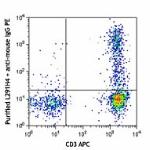
Human peripheral blood lymphocytes were stained with purifie... 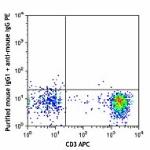
-
Alexa Fluor® 647 anti-human CD194 (CCR4)
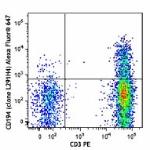
Human peripheral blood lymphocytes were stained with CD3 PE ... 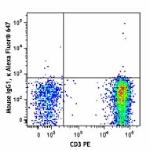
-
APC anti-human CD194 (CCR4)

Human peripheral blood lymphocytes were stained with CD3 FIT... 
-
PE/Cyanine7 anti-human CD194 (CCR4)

Human peripheral blood lymphocytes were stained with CD3 FIT... -
PE anti-human CD194 (CCR4)

Human peripheral blood lymphocytes were stained with CD3 FIT... 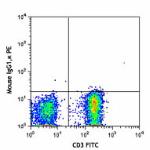
-
Brilliant Violet 421™ anti-human CD194 (CCR4)
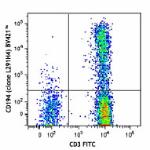
Human peripheral blood lymphocytes were stained with CD3 FIT... 
-
Brilliant Violet 510™ anti-human CD194 (CCR4)

Human peripheral blood lymphocytes were stained with CD3 FIT... 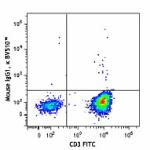
-
Brilliant Violet 605™ anti-human CD194 (CCR4)
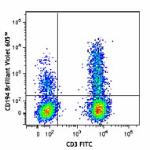
Human peripheral blood lymphocytes were stained with CD3 FIT... 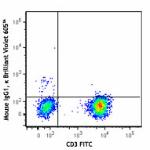
-
PE/Dazzle™ 594 anti-human CD194 (CCR4)
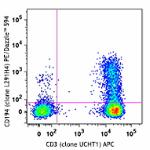
Human peripheral blood lymphocytes were stained with CD3 APC... 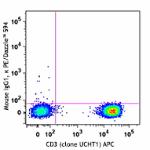
-
Biotin anti-human CD194 (CCR4)

Human peripheral blood lymphocytes were stained with CD3 APC... -
TotalSeq™-A0071 anti-human CD194 (CCR4)
-
TotalSeq™-C0071 anti-human CD194 (CCR4)
-
TotalSeq™-B0071 anti-human CD194 (CCR4)
-
APC/Fire™ 750 anti-human CD194 (CCR4) Antibody

Human peripheral blood lymphocytes were stained with CD3 FIT... -
PE/Fire™ 810 anti-human CD194 (CCR4) Antibody

Human peripheral blood lymphocytes were stained with anti-hu... -
PE/Fire™ 700 anti-human CD194 (CCR4)

Human peripheral blood lymphocytes were stained with anti-hu... -
TotalSeq™-D0071 anti-human CD194 (CCR4)
-
KIRAVIA Blue 520™ anti-human CD194 (CCR4)

Human peripheral blood lymphocytes were stained with anti-hu... -
APC/Fire™ 810 anti-human CD194 (CCR4)

Human peripheral blood lymphocytes were stained with anti-hu... -
PerCP/Fire™ 780 anti-human CD194 (CCR4)

Human peripheral blood lymphocytes were stained with anti-hu... -
Alexa Fluor® 700 anti-human CD194 (CCR4)

Human peripheral blood lymphocytes were stained with anti-hu... -
PerCP/Fire™ 806 anti-human CD194 (CCR4)

Human peripheral blood lymphocytes were stained with anti-hu... -
Spark Red™ 718 anti-human CD194 (CCR4) (Flexi-Fluor™)
 Login / Register
Login / Register 













Follow Us